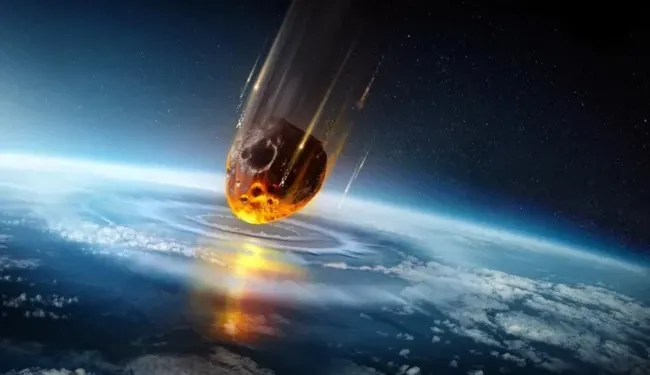World
NASA Scientist Warns Nigeria, 8 Others at Risk of ‘City-Killer’ Asteroid Impact

A NASA scientist has identified Nigeria and eight other countries as being at risk of a devastating ‘city-killer’ asteroid impact, raising concerns about global preparedness for potential space threats.
David Rankin, a scientist from NASA’s Catalina Sky Survey Project, has issued a warning about the potential collision of a massive asteroid named 2024 YR4 with Earth in 2032. The risk corridor for this event covers nine countries, including Nigeria.
He stated that the asteroid, which is estimated to be 90 meters wide—roughly the size of Big Ben—currently has a 2.3% chance of hitting Earth.
According to his projections, the asteroid’s risk corridor extends from South America across the Pacific Ocean and passes through regions including South Asia, the Arabian Sea, and Africa. Countries situated within this path are Venezuela, Colombia, Ecuador, India, Pakistan, Bangladesh, Ethiopia, Sudan,and Nigeria.
The ultimate site of impact would be influenced by Earth’s rotation at the moment of collision. Should it hit, scientists predict the asteroid could demolish structures within a two-mile radius. An asteroid of comparable size struck Siberia in 1908 and devastated 830 square miles of forest.
In December 2024, the Asteroid Terrestrial-impact Last Alert System station in Chile, funded by NASA, first identified 2024 YR4. At that point, it was ranked highest on NASA’s risk list despite having an impact probability of only 1.3%.
An international team is currently utilizing the James Webb Space Telescope to enhance impact risk evaluations. A spokesperson from the European Space Agency (ESA) mentioned to the Daily Mail, “Astronomers globally are employing advanced telescopes to precisely measure the asteroid’s trajectory. However, understanding its orbit will only indicate whether an Earth collision could occur, not how serious such an impact might be.”
The ESA emphasized the significance of identifying the asteroid’s size, noting that a 40-meter asteroid presents a considerably lower risk compared to one measuring 90 meters.
The infrared sensors on the James Webb Space Telescope are anticipated to offer a more accurate size estimate by detecting the heat emitted from the asteroid, assisting scientists in assessing its possible scale of destruction.
